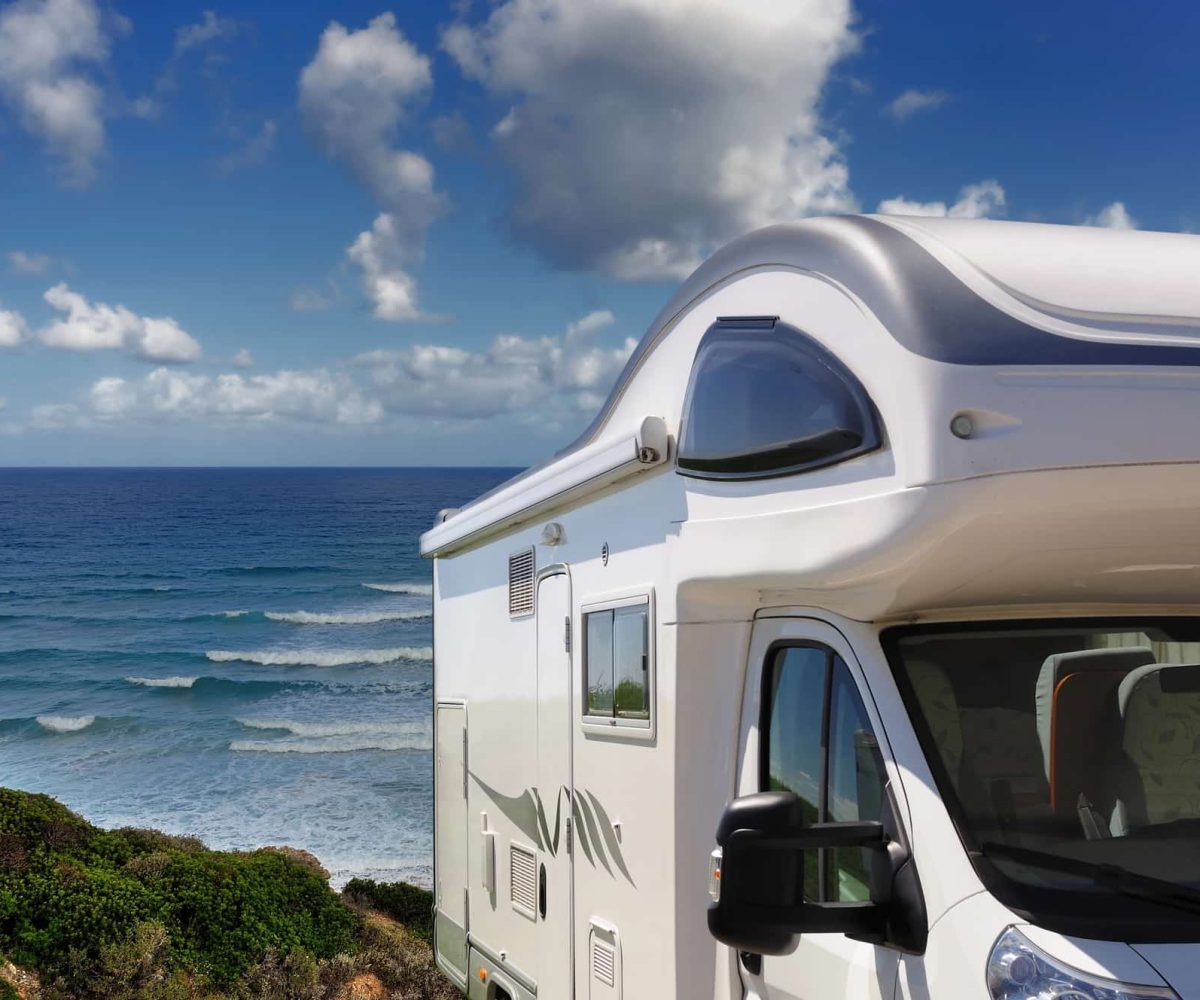Guide to Beach Camping

Beach camping is a unique way to experience the shore. Unlike traditional camping, which typically takes place in the mountains or forest, beach camping takes place close to a body of water such as the ocean. It involves pitching a tent or other type of shelter and living near the beach overnight.
It’s important to plan ahead before camping at the beach. Pack the right supplies, inspect your tent, and plan for a coastal climate. Consider how the location, tide patterns, and proximity to fresh water will affect your plans.
1. Do Your Research About the Weather and Climate
The beach is a beautiful backdrop for camping, but it can also be unpredictable. Extreme weather like rain, hail, and thunderstorms sometimes form over the ocean, so it’s important to stay prepared. Your goal should be to stay comfortable and safe, no matter how the weather behaves.
Bring sunscreen, hats, and sunglasses in case the weather stays sunny and warm. Don’t forget a raincoat, warm blankets, and an umbrella if the skies turn dark.
2. Be Aware of Any Local Laws
Local laws might dictate where you can park, how to dispose of waste, and where you can light a fire. Adhering to these and other laws creates a safe experience for all campers. Make it a goal to understand local regulations and follow them as a good steward of the land.
You might need a few tools to properly follow local laws. Bring trash bags to dispose of waste. Depending on your location, you may also need to bring a written wildlife guide — one that helps you identify and avoid species protected by law.
3. Make a Checklist
A checklist ensures you include all the items you need in your bags. It also helps prevent overpacking and allows you to prioritize emergency supplies. Your goal in creating a checklist should be to identify exactly which items you need for a successful beach camping trip.
Here are a few items to include on that checklist:
- Shelter and sleeping gear, including a tent, sleeping bag, and ground tarp;
- Clothing and personal items, including weather-resistant clothing, sunscreen, and insect repellant;
- Swim gear, like a bathing suit, towels, snorkel gear, and goggles;
- Food and cooking supplies, such as a portable grill, cooler, and utensils;
- Water, including at least one 5-gallon water jug, water bottles, and extra bottled water just in case;
- Beach gear, like blankets, chairs, fishing equipment, and an umbrella
Make sure you also have enough room in your bag or backpack for emergency supplies like a first aid kit and flashlight.
4. Bring Emergency Supplies
Safety supplies are perhaps the most important items in your camping backpack. They can help protect you from danger and enable you to appropriately respond in the event of an emergency.
Here are a few emergency supplies to bring on your next beach camping trip:
- First aid kit: Stock it with bandages, gauze pads, and any personal medications you need.
- Navigation tools: Bring maps and a compass to help you find your way in case you get lost.
- Safety whistle: This is a safe, effective way to draw attention if you need help from others.
- Flashlight or headlamp: Lamps help preserve visibility after sunset.
- Fire-making tools: Waterproof matches and a fire starter kit help you light a fire if conditions are wet or cold.
- Food rations: Pack extra, non-perishable food items in case you need them.
- Emergency contact information: Include a list of emergency contacts, and phone numbers for local authorities, in your backpack.
Your goal should be to plan for emergencies before they happen. These supplies keep you prepared in the face of the unexpected.
5. Ensure Your Shelter Is Appropriate for the Conditions
Choosing your shelter is one of the first steps to a successful beach camping trip. Your structure should protect you from the elements and preserve a safe interior. If you’re camping in an area with frequent rainfall, consider a tent with waterproof materials and sealed seams. Look for options that can also withstand elements like sun, wind, and heat.
Your goal in choosing a shelter is simple: keep weather elements outside while preserving a cool, comfortable environment inside.
6. Carefully Choose the Location
It’s important to find a beach camping spot that’s comfortable and safe. Choose a location with level ground that offers pristine views of local wildlife. Use maps, hiking guides, and reviews from previous campers when making this decision.
Your goal when selecting a beach camping location is to balance safety and serenity. You can consider beautiful views and natural shade, but be sure to prioritize amenities like waste disposal and clean water as well.
7. Bring Plenty of Water
Make sure you’re constantly drinking water throughout the day. This helps replenish lost fluids and prevent symptoms like headache, dizziness, and fatigue. If there’s no source of water nearby, bring more than enough with you. Use collapsible containers and insulated water bottles to bring water on a hike. Drink water before you feel thirsty, even if it means taking a break from your current activity.
8. Prioritize Skincare
When camping, your skin is typically exposed to the elements more than it would be at home. Irritants like heat and sand can leave you susceptible to flaky, dry, itchy skin. When you forget to prioritize skincare, the results are quickly noticeable.
Your goal in considering skincare is to keep your skin healthy and moisturized. Bring along sunscreen and long-sleeved clothing to protect your skin from the sun. You can also use moisturizer to restore your skin’s hydration.
9. Choose Tent Accessories Made for Beach Camping
Choosing the right tent accessories — including stakes, tarps, and sand-free mats — can make the experience more enjoyable. They create a secure, temporary home on the beach, anchoring your shelter into the ground.
Your goal in choosing tent accessories is to make your shelter a safer place to live. Use aluminum tent poles for the skeleton of your tent, built to withstand salt water and rust. Find canopy stakes made for uneven earth and an all-terrain tarp. Add a sand-free mat, woven with water-resistant fabric, that helps clean sand off your feet before you enter your shelter. These accessories provide additional protection against the elements and create a clean, comfortable shelter.
10. Plan for the Tide and High Winds
Check the forecast and tide tables before setting out. This can help you plan beach activities around high tide and use the right shelter accessories to withstand high winds.
According to REI, “Most coastal areas experience two high tides and two low tides every day and they may not be equal.” To plan for these periods, consult online resources and learn how to read tide charts. Check visual cues like sand dryness and seaweed lines to approximate when the last high tide was.
High winds can disrupt your shelter, create sandstorms, and prevent you from setting up a campfire. Your goal in preparing for tide and wind changes should be to prioritize safety. Planning for the winds and tides means packing supplies like windbreaker jackets that minimize how wind affects your skin.
11. Be Mindful of the Local Ecosystem
If you’re not careful, you might find yourself accidentally disrupting local wildlife. Even without meaning to, you might trample vegetation or upset endangered species while setting up your campsite.
Your goal when camping on the beach should be to protect the ecosystem. This means safely disposing of waste and keeping chemicals from fire starters and sunscreen from seeping into the ground. This seepage can leach into local bodies of water and introduce foreign chemicals into the environment.
12. Carefully Remove Sand Before Entering Your Tent
Make sure to remove sand before you enter your tent. This keeps your tent clean and comfortable, protecting your sleeping materials from unwanted dirt.
If your goal is a sand-free tent, a few resources can help. Place a doormat or small rug outside of your tent where you can wipe your feet. You can also use a towel or brush to remove excess sand from your clothing. Keep items that might collect sand, including shoes, outside the tent at all times.
13. Prepare Your Vehicles for the Trip
Car safety is also an important priority before a beach camping trip, particularly if you plan to travel in an RV. Check gas and oil levels, inspect your tires for wear, and test your brakes for responsiveness. Test all critical systems after you take your vehicle out of RV storage. Make sure smoke and carbon monoxide detectors are all functioning well. If you have a boat in storage, test the engine and ensure you have enough life vests before setting out.
Your goal in preparing your vehicle is the same as your goal for beach camping itself: to enjoy a safe, immersive experience. While preparation takes time, it also gives you the best chance to relax and enjoy the ocean once you arrive.
